
Bukhara (Bukhoro/ Buxoro), south-central Uzbekistan, located about 140 miles (225 km) west of Samarkand. The city lies on the Shakhrud Canal in the delta of the Zeravshan River, at the center of Bukhara oasis. Founded not later than the 1st century, Bukhara was already a major trade and crafts center along the famous Silk Road.
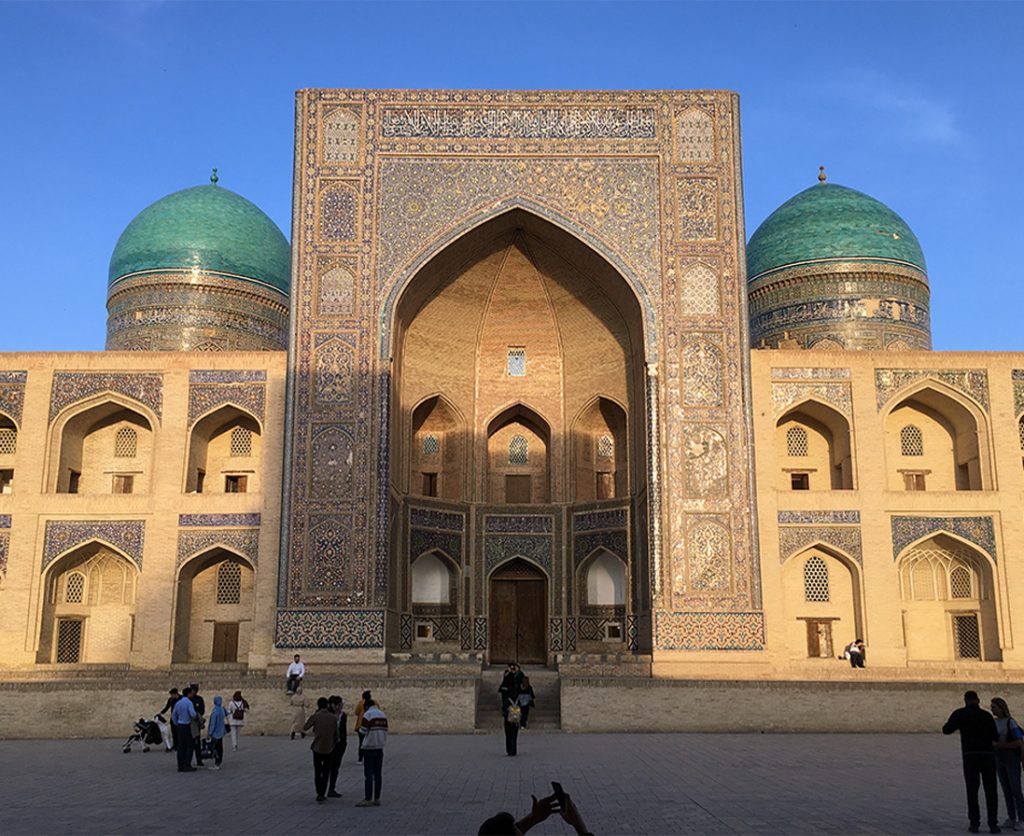
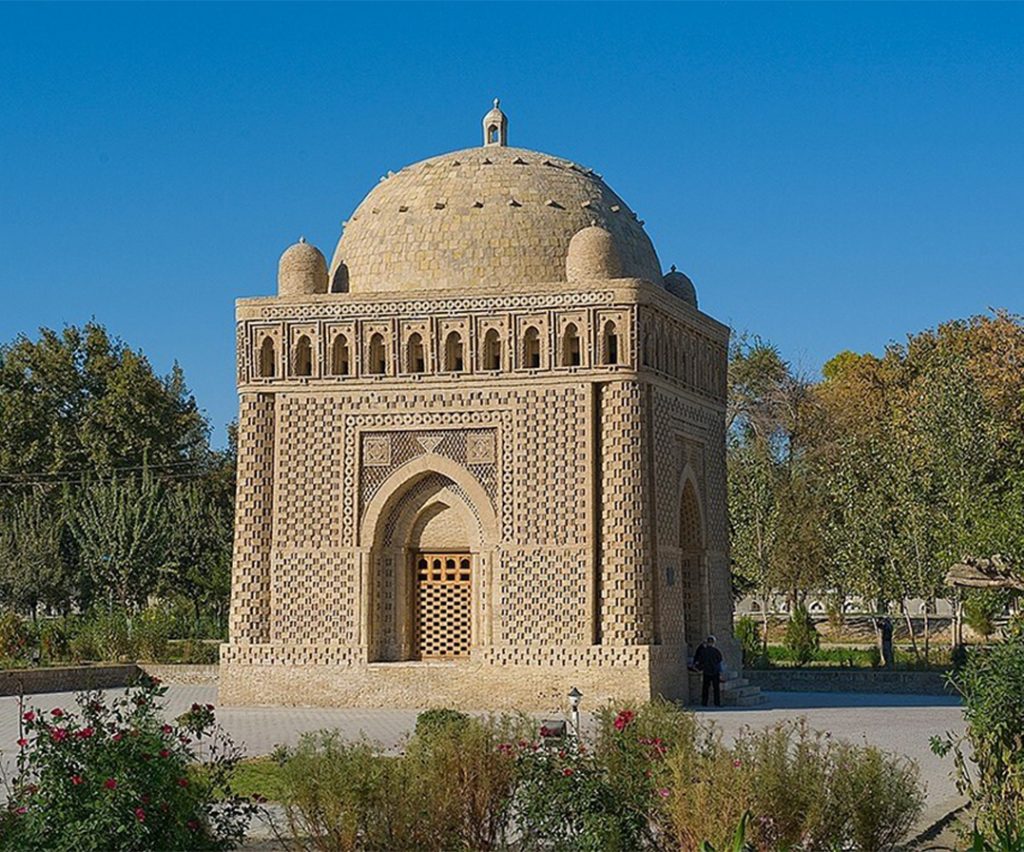
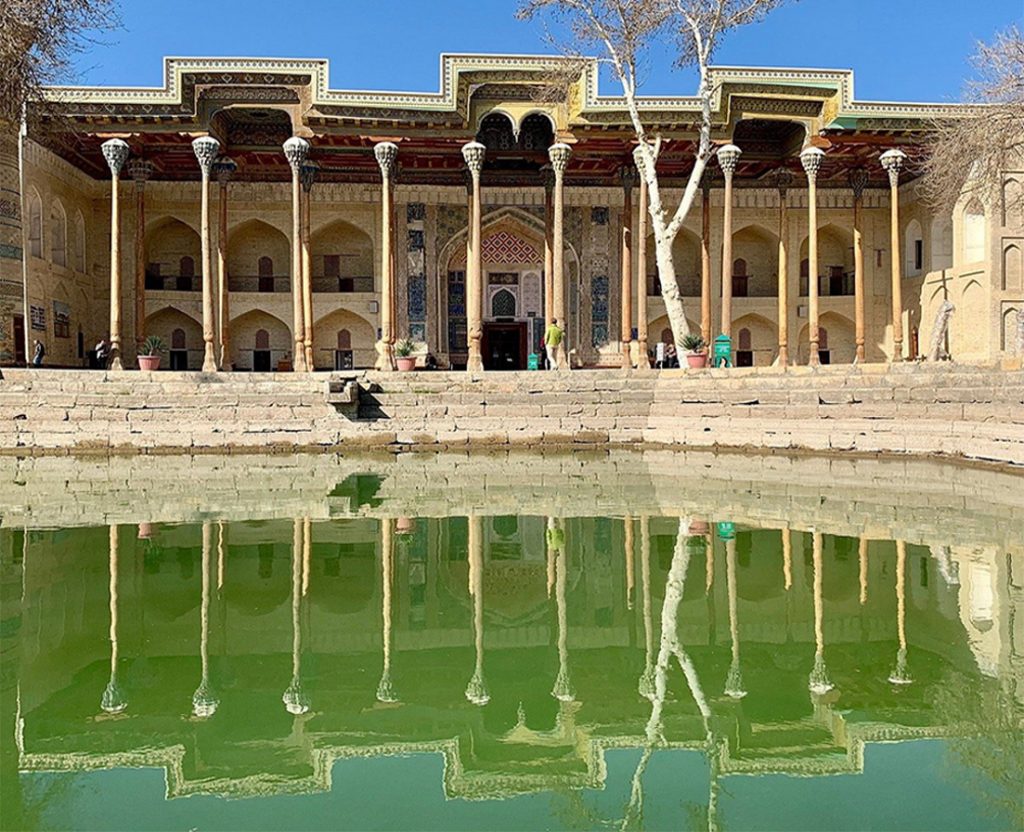
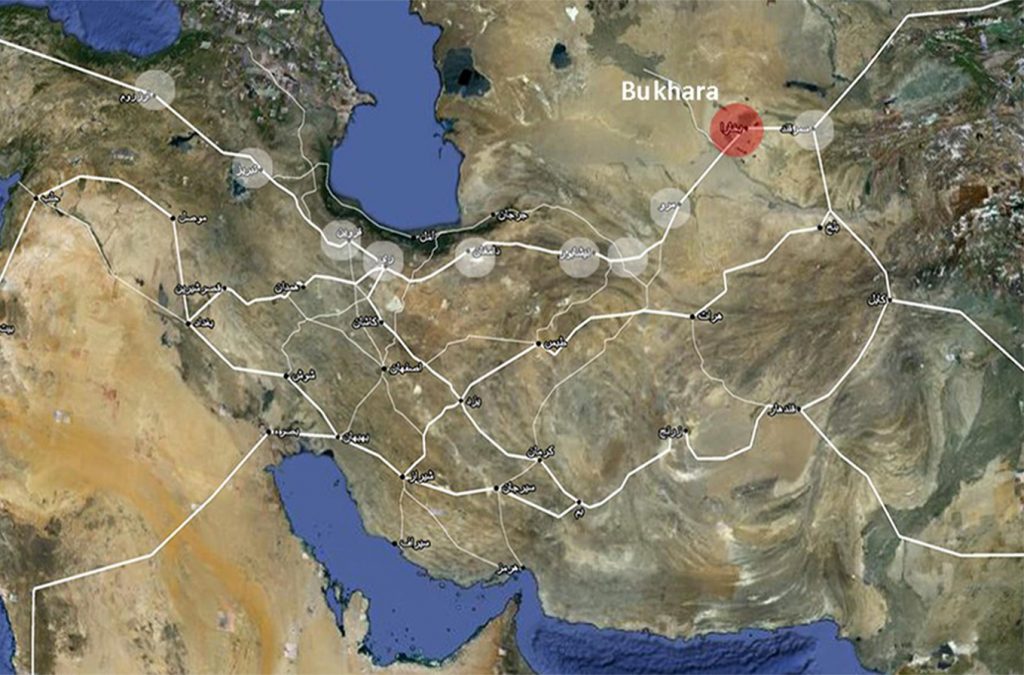
Bukhara attained its greatest importance in the late 16th century, when the Shaybānids’ possessions included most of Central Asia as well as northern Persia and Afghanistan. The historic center of Bukhara, designated a UNESCO World Heritage site in 1993, still retains much of its former aspect, with its mosques, madrasas (Muslim theological schools), flat-roofed houses of sun-dried bricks, and remains of covered bazaars.Among important buildings are the Ismāʿīl Sāmānī Mausoleum (9th–10th century); the Kalan minaret (1127) and mosque (early 14th century); the Ulūgh Beg (1417), Kukeldash (16th century), Abd al-ʿAziz Khān (1652), and Mir-e ʿArab (1536) madrasas; and the Ark, the city fortress, which is the oldest structure in Bukhara.

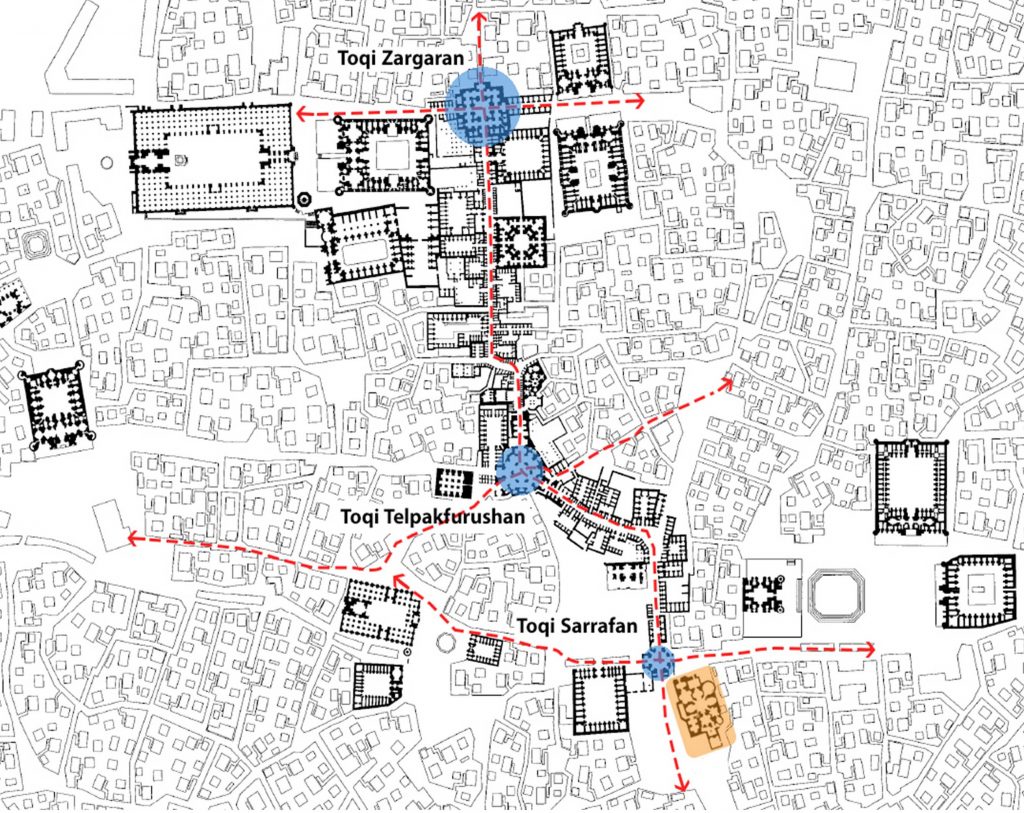
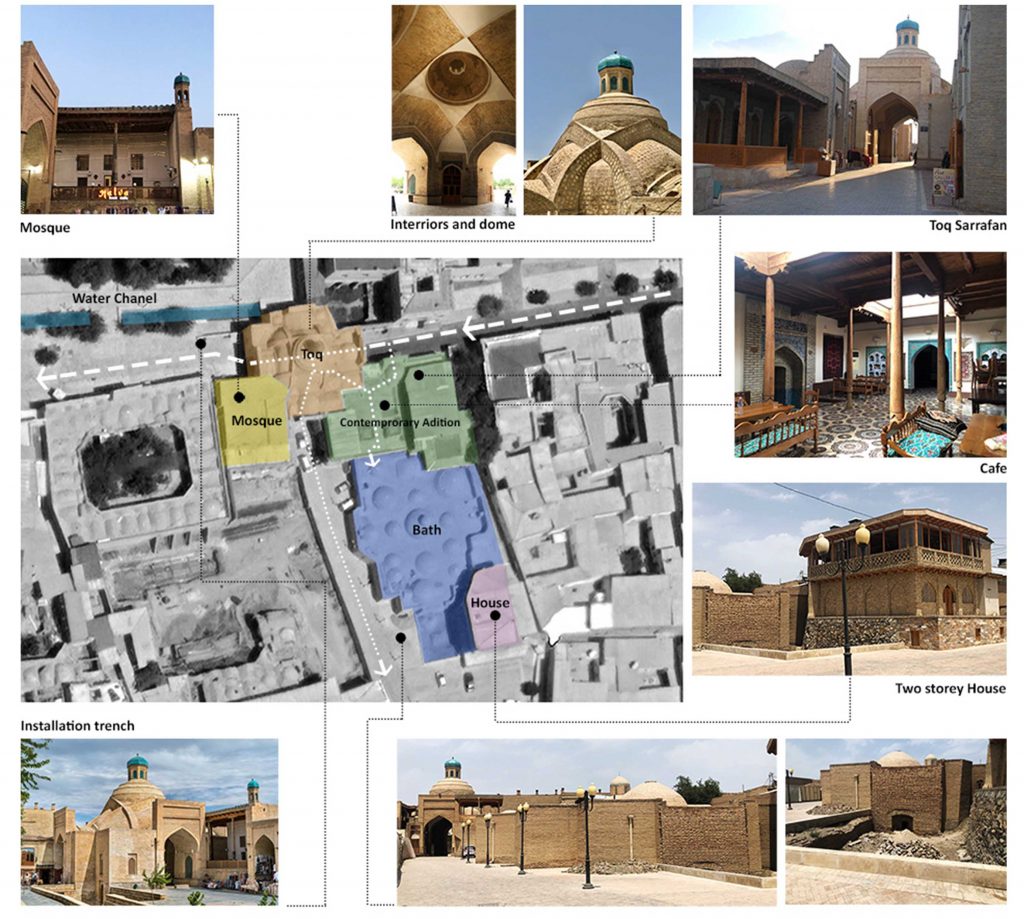
Sarafan Hammam built by Abdullah Khan (1157-98 C.E.) is one of the historical buildings of Bukhara, which is located within the world registration area (UNESCO Heritage site) of the city in the southern part of the main bazaar, adjacent to Sarafan’s Dome and Mosque. The distinctive feature of this complex is the continuity of the common pattern in the architecture of Iranian baths, which were built during the Shibanids dynasty.
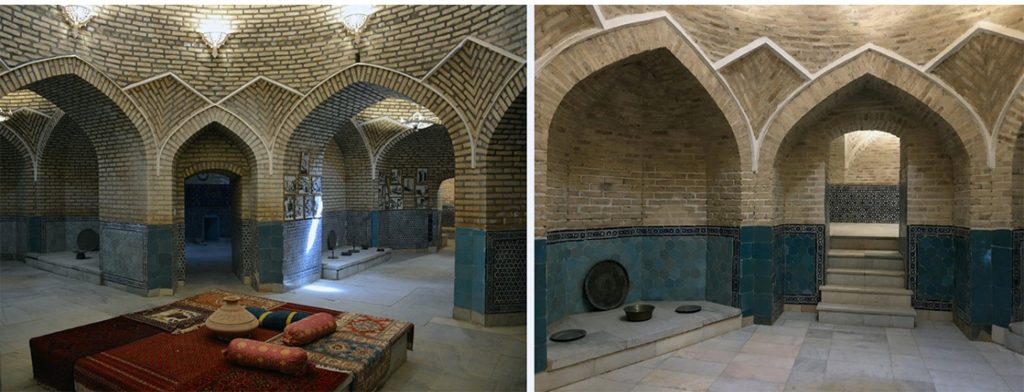
The Sarrafan Baths’ consisted of a central octagonal bath with rooms on all sides. The different rooms were multi-purpose, allowing for a range of activities from simple relaxation to business meetings, conversation, and games. There are differences between the layout of the men’s and women’s bath quarters. Men had separate rooms for worship and the rooms were intricately decorated with tile work. The women’s bath was less decorated and lacked any separate stalls.

The operation of this bath continued 4 centuries until 1975 and until its closure. Based on the archaeological information and examination of the masonry foundations as well as additional elements of the complex, it has been determined that the original building has undergone extensive changes during its operation. In 1975, Sarrafan Hammam stopped its operation due to public health issues.
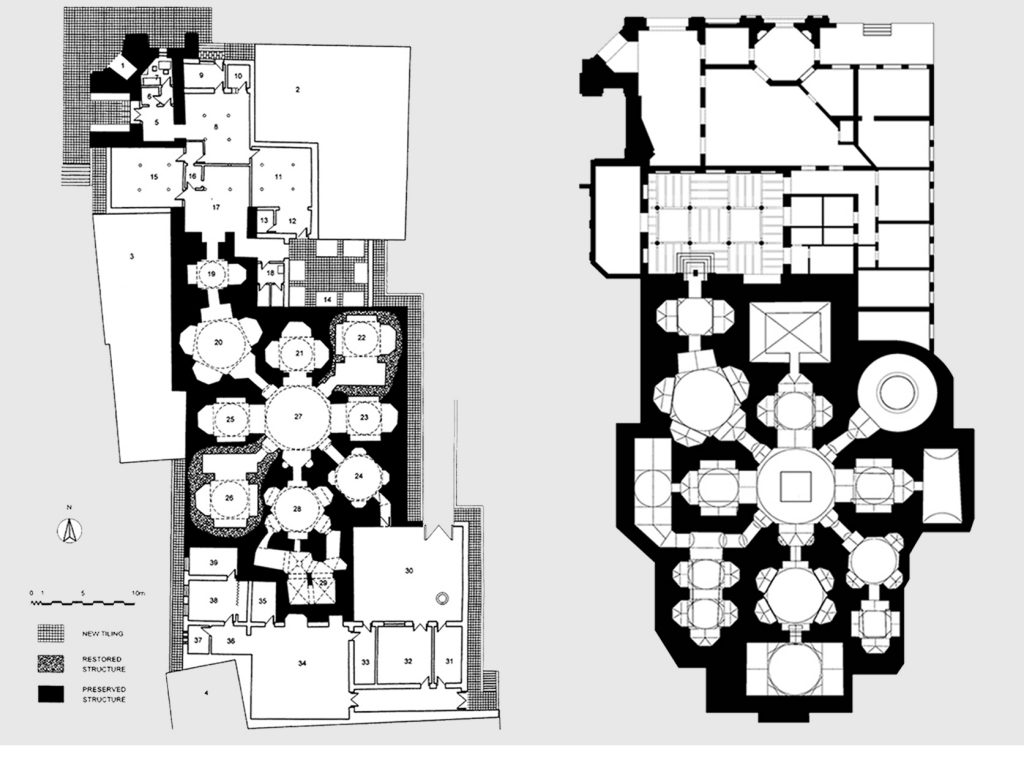
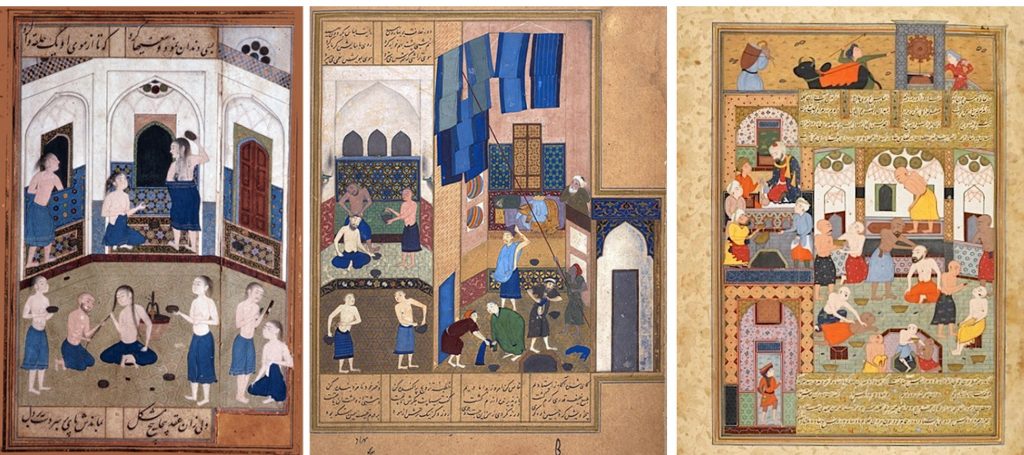
The traditions of the eastern hammam baths originated in antiquity, in the 7th century, when the first bath houses appeared. The steam bath tradition came to Central Asia from Iran.The spread of hammams in Asia went in parallel with Islam.With the conversion of the population of Iran to Islam, ritual purity through washing one’s body became a requirement of religious life. Thenceforth bathing became an integral part of life.
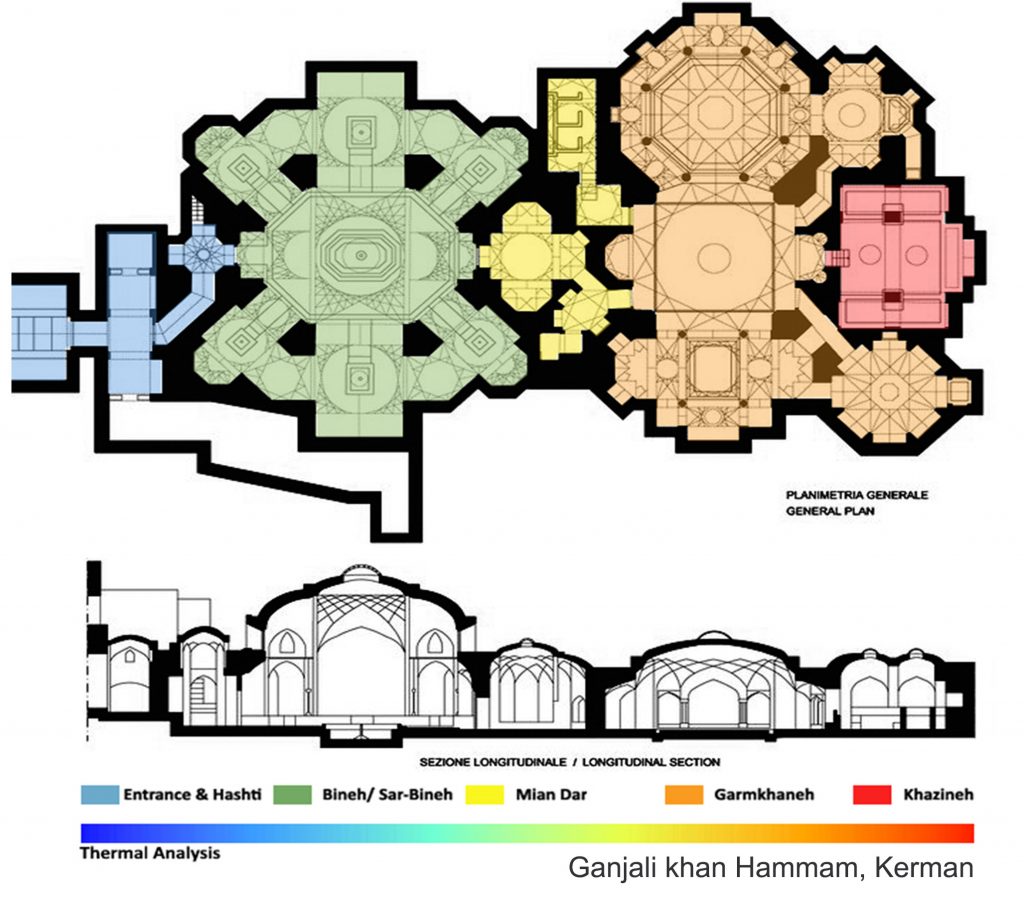
A bathhouse consists, in general of at least three sections enclosed on all sides, lighted by small rectangles in the roof and/or by oil lamps. The atmosphere in the bath becomes progressively hotter and more humid as one proceeds toward the steam room (garm-ḵāna), where people experience intense perspiration.
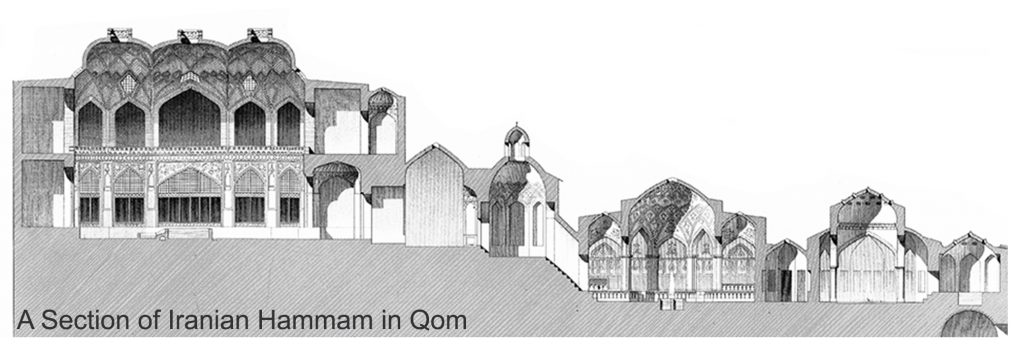
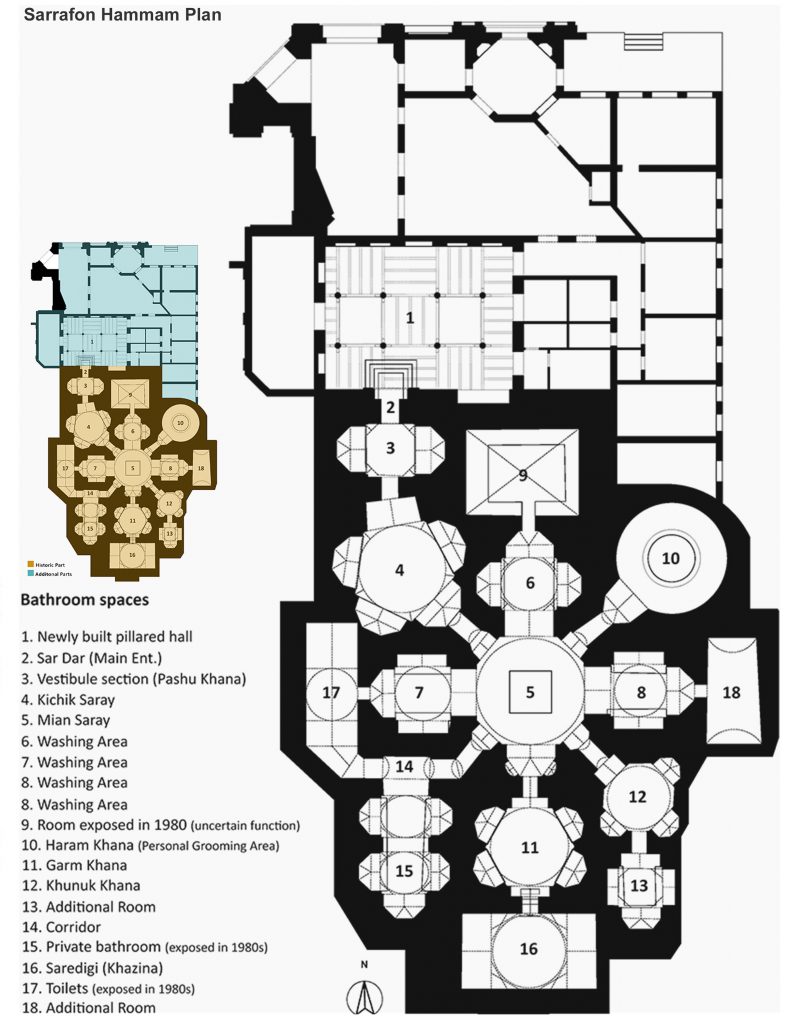
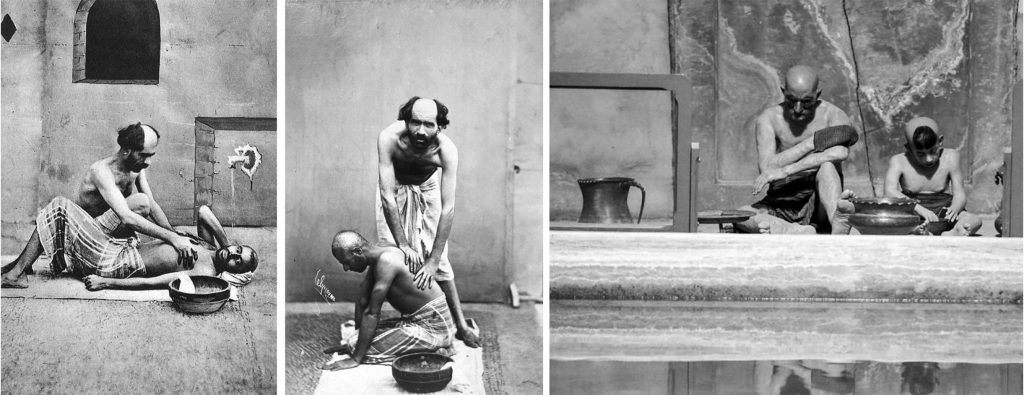
Vision Document
[Sarrafon Historic Bath and Hair Spa Salone]
Considering the historical function of the building as one of the eighteen baths in Bukhara and examining the national documents and the policies announced by the client, the proposed function of the complex is predicted as a “Traditional bath”.

As a relic of the Shibanid period, the Sarrafan hammam, with the completion of physical and structural intervention and the construction of tourism service infrastructures, in the horizon of 2025, is one of the luxurious tourism complexes of the city of Bukhara, which in addition to meeting the needs of the citizens of this city due to the quality of the space and the prediction of suitable functions is a unique set for foreign tourists and offers the highest possible quality to its guests.
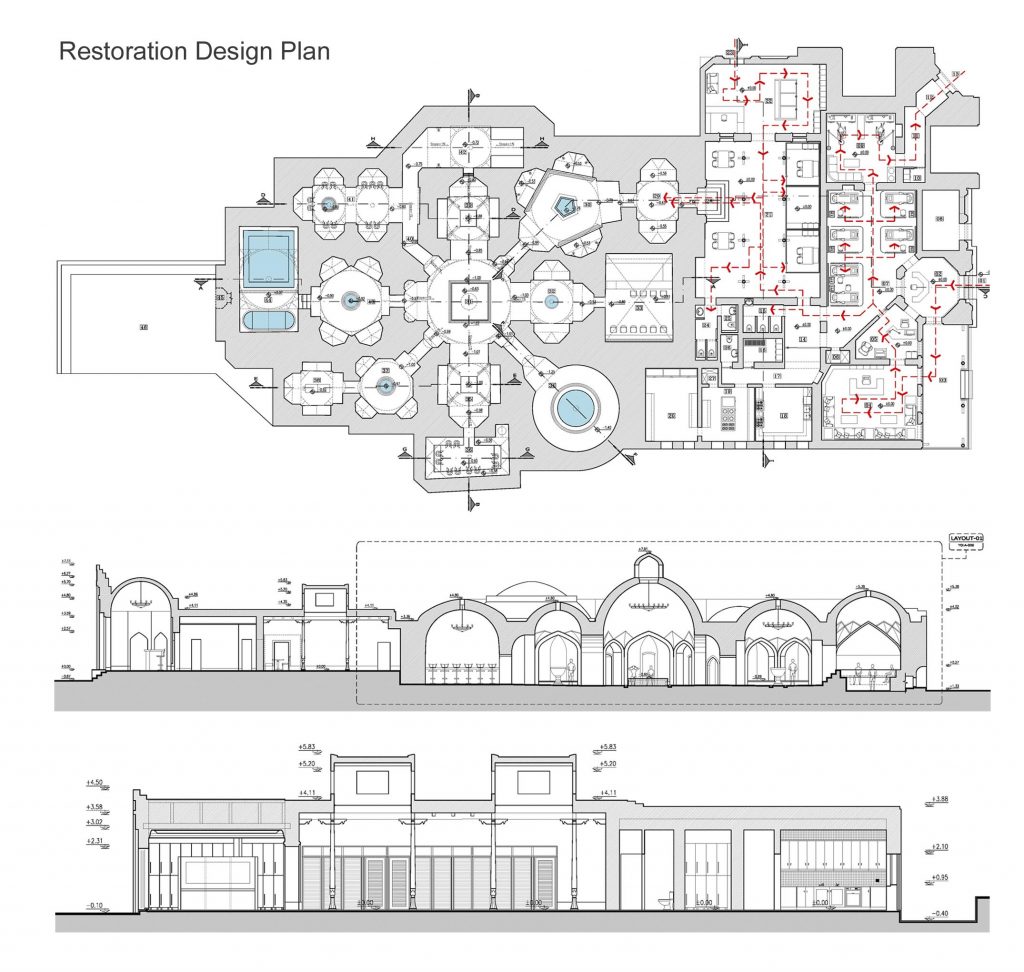
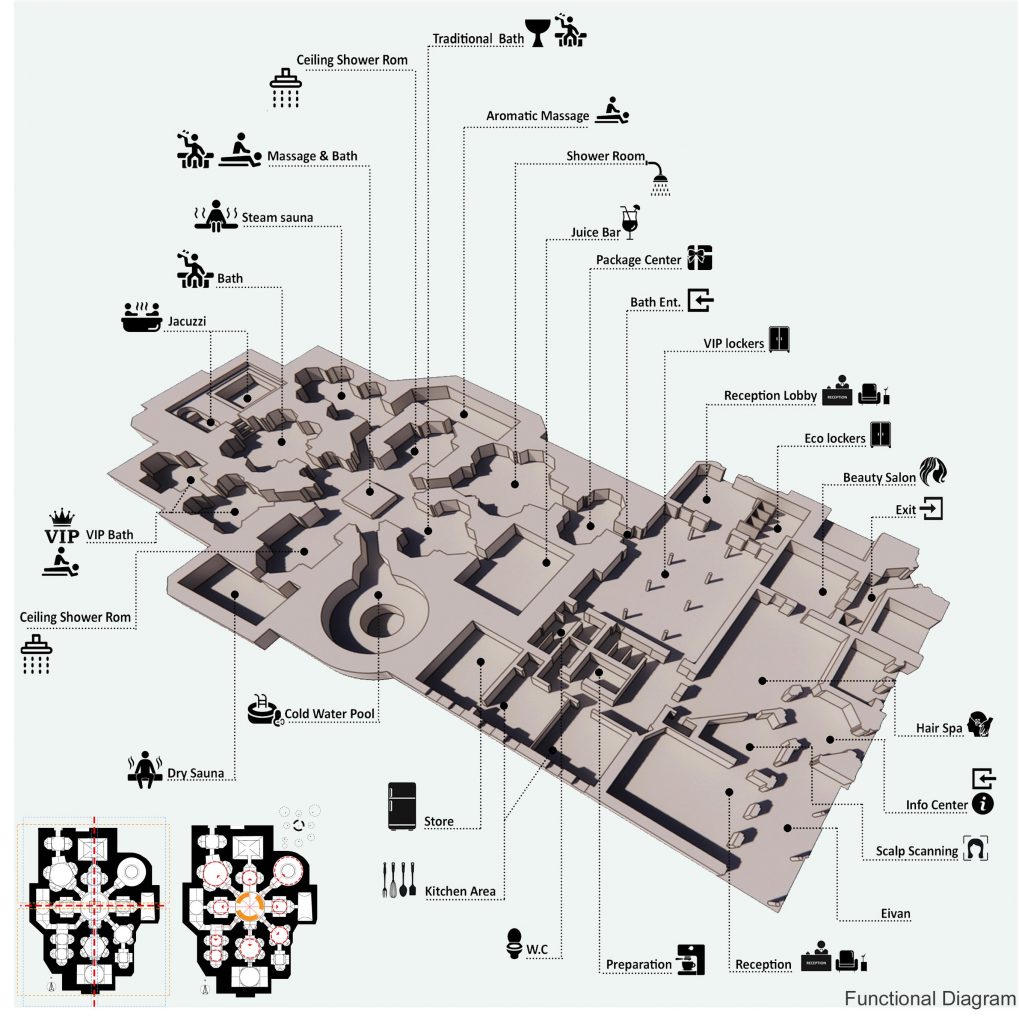
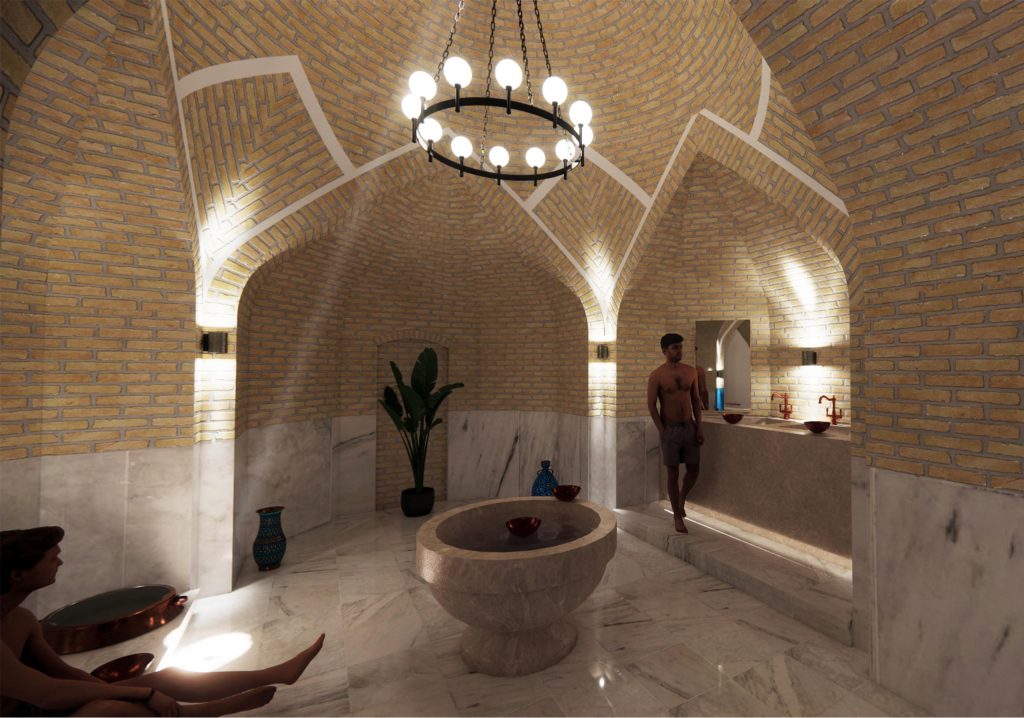
Go to top